Discover Xoconostle Fruit Growing and Benefit Information in this comprehensive guide and enjoy the distinct taste.
Read the Xoconostle Fruit Growing and Benefit Information guide to Discover the secrets of this exotic fruit and how it can enhance your well-being.
LEARN How to Grow Hatiora Salicornioides
What is Xoconostle Fruit?

Also known as Tuna Agria, Xoconostle cactus fruit (Opuntia matudae) is a sour prickly pear. The name, “xococ,” comes from the ancient Nahuatl language, where it means ‘sour.’ This name helps distinguish it from the sweet cactus fruits of different Opuntia species.
Xoconostle cactus fruit comes from Central Mexico and has been used by indigenous people there for thousands of years. They grow well in dry northern and central Mexico areas and near the Gulf of California.
Appearance: The Xoconostle fruit grows at the end of cactus paddles, known as nopales, often appearing in groups of up to twelve on one paddle. It has a pear-like shape that tapers to a point and is relatively small, measuring about 2-3 inches in length and approximately 1-2 inches in width. When ripe, its pale green skin develops a faint pink blush.
Similar to its prickly pear relative, the Xoconostle cactus fruit is covered in small spines that, when removed, leave behind small circular marks. The flesh of this cactus fruit ranges from bright green to pale peach or pink and boasts a smooth, juicy texture. Unlike some other prickly pear varieties, the seeds in Xoconostle are concentrated in the center rather than scattered throughout the flesh. These seeds are small and edible, resembling passion fruit seeds.
The flavor of Xoconostle fruit is intricate, featuring a sour tang with an acidic finish.
Read Red Custard Apple Tree Growing and Care Guide
How to Propagate Xoconostle Fruit
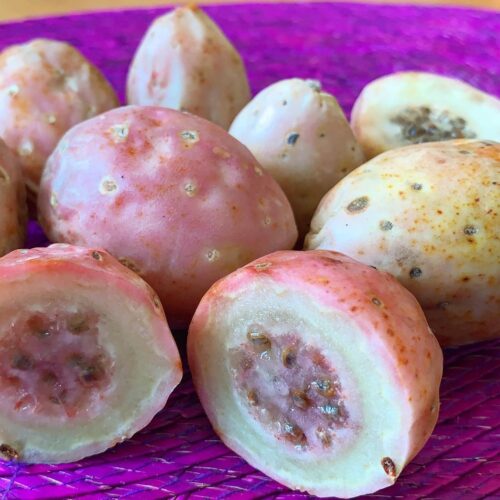
The easiest method of propagating Xoconostle Fruit is seeds.
- Collect ripe Xoconostle fruit. Take out the seeds from the flesh and allow them to air dry for a day or two.
- Fill small pots or seed trays with a well-draining cactus or succulent potting mix. Plant the dried Xoconostle seeds into the soil and press them lightly.
- Water the soil gently, make sure it is evenly moist but not soggy. Ensure that the pots or trays have good drainage holes.
- Place the pots or trays in a warm and sunny location, such as a bright windowsill or under grow lights. Xoconostle seeds require plenty of light to germinate.
- Keep the soil consistently moist, and the seeds should germinate within a few weeks to a couple of months, depending on conditions.
- Once seedlings have several true leaves and are large enough to handle, you can transplant them into larger containers or directly into the garden.
LEARN How to Grow Amla Tree
Pot Size for Growing Xoconostle Fruit
For Xoconostle Fruit, choose a pot at least 12 inches (30 cm) in diameter and depth. Terra cotta pots work well, as they allow excess moisture to evaporate. Ensure the pot has drainage holes to prevent waterlogged soil.
Check Best Banana Varieties
Ideal Growing Conditions for Xoconostle Fruit
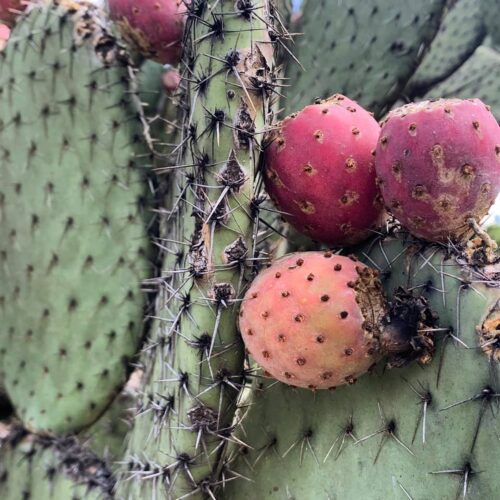
Location
Grow this plant in full sun for optimal growth, it should get at least 6-8 hours of direct sunlight daily. Place it in a sunny south or west-facing location in your garden or on a south or west-facing windowsill if growing indoors.
Soil
Xoconostle Fruit thrives in well-draining soil. Use a cactus or succulent potting mix or amend regular garden soil with equal parts of perlite or coarse sand for good drainage. A slightly acidic to neutral soil pH, ideally around 6.0 to 7.0 will be perfect.
Water
Water Xoconostle Fruit moderately, allowing the soil to dry slightly between watering. Typically, water every 2-3 weeks during the growing season (spring and summer). Reduce watering in the dormant season (fall and winter) to prevent root rot. Always water at the base of the plant; avoid overhead watering to prevent fungal diseases.
Temperature and Humidity
Xoconostle fruit is a prickly pear cactus fruit that prefers warm and arid conditions. The ideal temperature range for growing Xoconostle is between 70°F and 100°F (21°C to 37°C).
Keep humidity low, around 10-20%. These conditions mimic its native habitat in Mexico.
READ Tips for Growing Apple Trees in Pots
Xoconostle Fruit Care

Fertilizer
Use a balanced fertilizer with an NPK (Nitrogen, Phosphorus, Potassium) ratio of around 10-10-10 or 14-14-14. Apply it sparingly in spring and early summer when the plant grows actively.
Avoid fertilizing during dormancy, as Xoconostle requires a rest period. Over-fertilization can harm the plant.
Pests and Diseases
Cactus Moth (Cactoblastis cactorum), scale Insects, and aphids can infest the plant. Use insecticidal soap or neem oil spray to deter them.
Xoconostle can be susceptible to various fungal diseases, such as powdery mildew and root rot. Provide good air circulation and avoid overwatering to prevent these issues. You can use fungicides if necessary. Bacterial Rot can lead to rot in the pads and fruits. Prune affected areas and apply copper-based fungicides to control the spread.
CHECK Best Companion Plants for Pest Control
Harvesting
To harvest Xoconostle fruit successfully, wait until they change color to bright red or reddish-purple in late summer or early fall. Wear gloves, use clean tools like scissors, and cut the fruit with a small stem attached to avoid damage. Wash and store them in a cool, dry place or the fridge. Xoconostle fruits can ripen further after harvest, so monitor them for the desired ripeness.
EXPLORE Best Black Walnut Companion Plants
Benefits of Xoconostle Fruit
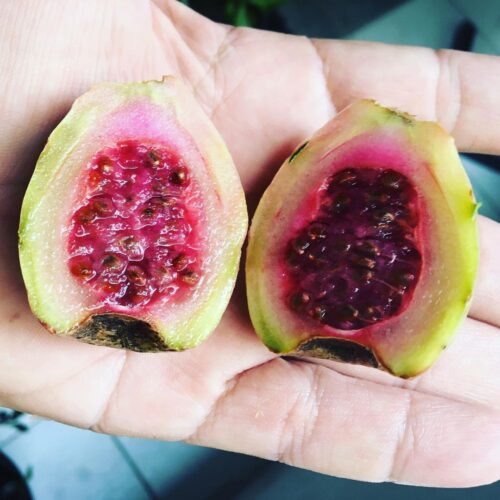
- Xoconostle cactus fruit is a nutritional powerhouse with high levels of fiber, vitamin C, calcium, and valuable phytonutrients like betalains, which offer impressive antioxidant benefits.
- It shares its unique betalain pigment with red beets, possessing antioxidant and antimicrobial properties.
- Interestingly, the seeds of Xoconostle, where this red pigment is concentrated, are believed to have even higher antioxidant properties than raspberries, red plums, and strawberries.
- Moreover, these seeds are also richer in fiber than the flesh of the Xoconostle fruit. This tangy cactus fruit is also a source of carotenoids and vitamin E.
BEST Roselle Plant Benefits
Xoconostle Fruit Recipe

- Xoconostle cactus fruit is popular for its tartness, enhancing the flavors of Mexican sauces, salsas, and dishes like Mole de Olla.
- To prepare the Xoconostle recipe, you can peel the fruit to access the raw flesh, which is ideal for pureeing or roasting. Alternatively, roast the whole fruit in the oven or a traditional clay comal. After that, cut it in half and scoop out the seeds and flesh.
- While it’s commonly used in savory recipes, it’s versatile enough to make jellies, jams, or chutneys.
- The flesh is perfect for crafting beverages such as green juices and smoothies.
- It can also serve as an excellent base for marinades or salsas, complementing chicken, pork, or fish dishes.
- You can Sauté and combine it with peppers, garlic, and onion in a molcajete, it transforms into a zesty salsa de borracha (rubber salsa).
- For preservation, you can make Xoconostle candy or dehydrate the fruit. You can refrigerate the fruit so it will remain fresh for up to five days.
LEARN How to Grow Watermelon
Xoconostle Fruit How to Eat
Peeling and Slicing:
- Begin by washing the Xoconostle fruit to remove any dirt or debris.
- Using a sharp knife, carefully cut off both ends of the fruit.
Make a shallow lengthwise incision along the skin, being cautious not to cut too deep. - Gently peel off the skin to reveal the juicy, translucent flesh.
Removing Seeds:
- Once the fruit is peeled, cut it in half or into slices.
- Scoop out the small, edible seeds with a spoon. These seeds are crunchy and can be eaten along with the flesh.
Eating Fresh:
- You can enjoy the Xoconostle fruit by peeling and seedless slices directly. The flavor is tart, similar to sour green apples, with a hint of lemon.
Cooking:
- Xoconostle fruit can be used in various savory dishes. You can roast it, add it to salsas, or use it in Mexican mole sauces for a tangy twist.
Preserving:
- If you have an abundance of Xoconostle fruit, consider making jams, jellies, or chutneys. You can also candy or dehydrate the fruit for longer storage.
Beverages:
- Blend the peeled fruit with water and a sweetener (if desired) to create a refreshing Xoconostle juice or smoothie. You can also use it as a base for cocktails.
Salsas and Marinades:
- Juice or finely chopped fruit can make unique Xoconostle salsa, marinade, or dressings for meat, poultry, or fish dishes.
CHECK Papaya Tree Care
Xoconostle vs. Tuna
Both Xoconostle and Tuna are types of prickly pear cactus fruit commonly found in Mexican cuisine, but they have distinct differences:
Xoconostle:
- Xoconostle has a tart and sour flavor.
- It is typically smaller in size compared to Tuna.
- The skin of Xoconostle is thick and often needs to be peeled before eating.
- It is commonly used in savory dishes, salsas, and sauces.
- Xoconostle is rich in vitamin C, fiber, and antioxidants.
Tuna:
- Tuna has a sweeter and milder taste, similar to a watermelon or a sweet cucumber.
- It is larger and more pear-shaped compared to the Xoconostle.
- Tuna can be eaten as is, with the skin, or peeled, depending on personal preference.
- It is often enjoyed fresh as a fruit or in fruit salads.
- Tuna is a good source of vitamins, especially vitamin C, and provides hydration due to its high water content.
CHECK Muskmelon vs. Cantaloupe
Xoconostle vs. Prickly Pear
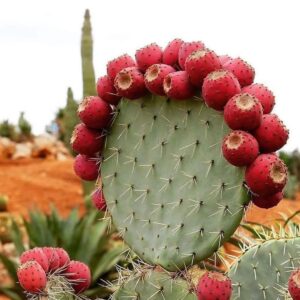
Both Xoconostle and prickly pear are related, but they differ in several key ways:
Xoconostle:
- Xoconostle is a specific variety of prickly pear cactus fruit.
- It is typically smaller, sour, and used in savory dishes and salsas.
- The skin of Xoconostle is usually thick and requires peeling.
- It’s common in Mexican cuisine, known for its tart flavor and culinary versatility.
Prickly Pear:
- Prickly pear is a broader term encompassing various cactus fruits, including the Tuna variety.
- Prickly pear fruits can vary in size, shape, and taste but are often sweet and mildly flavored.
- You can consume the skin of some prickly pears while others are peeled.
- People eat prickly pear fruits fresh, add them to fruit salads, or make them into jams, jellies, and beverages.

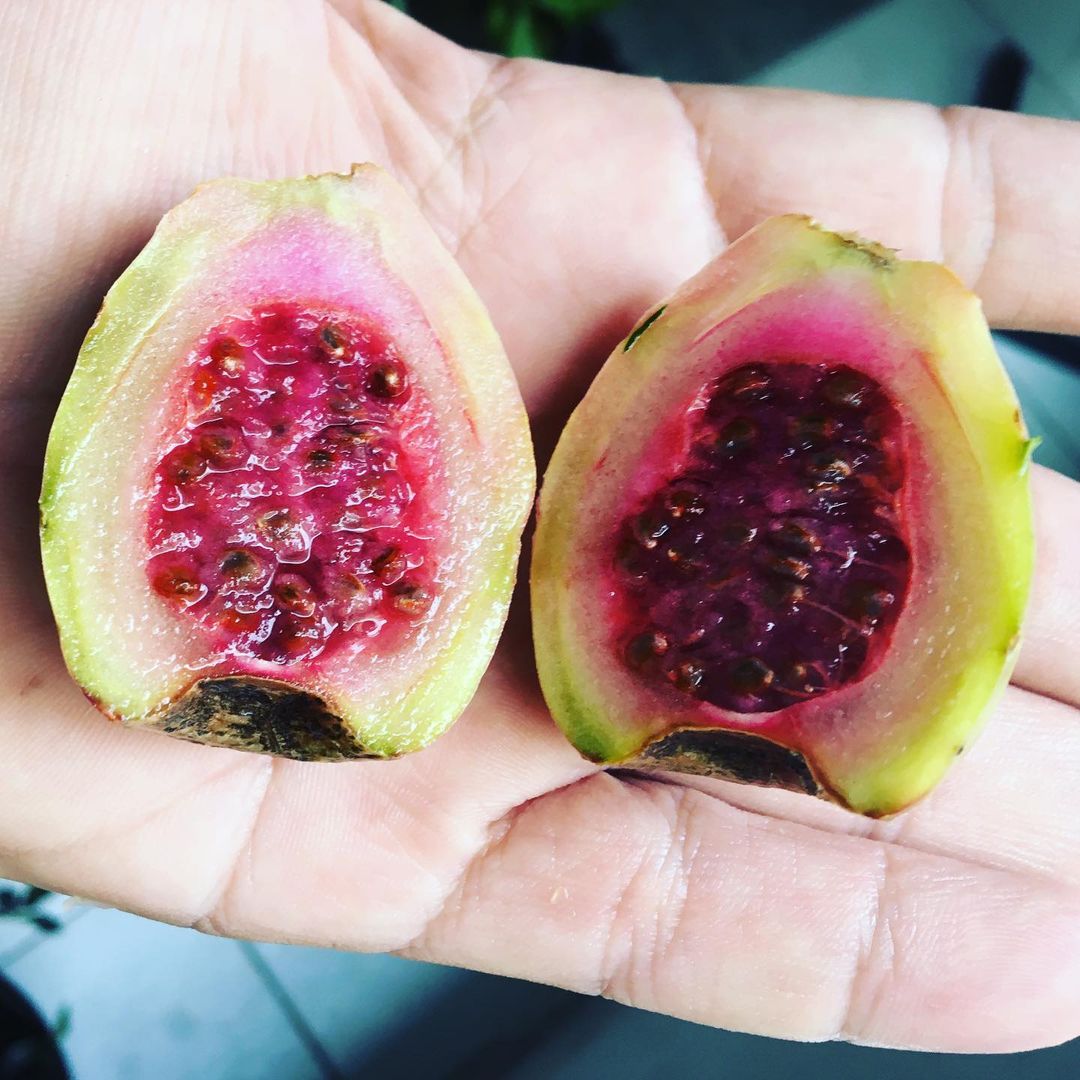

Hi,
I intend to contribute a guest post to your website that will help you get good traffic as well as interest your readers.
Shall I send you the topics then?
Best,
Julie Smith
please contact through mail
Hello,
I hope you’re well.
I’m looking to place an order for a product I found on your website, homegardeningweb.com. Could you confirm its availability and provide your product catalog with pricing details? I’ll send the order list and quantities soon.
Thank you for your help.
Best regards,
McKee Michael
Purchasing Manager